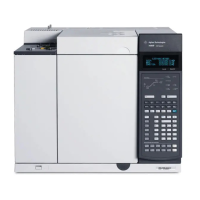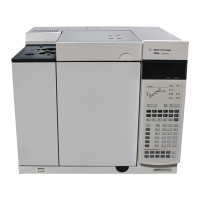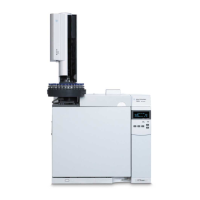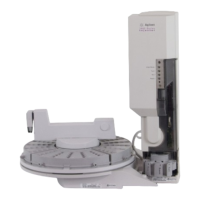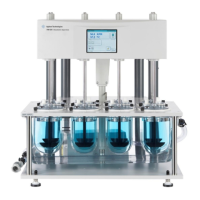68 Agilent 7890 Series Troubleshooting
3 Chromatographic Symptoms
If using an FID:
• Verify that the correct jet is installed.
• Check for a dirty jet.
• Check for contaminated detector parts.
• To Perform Maintenance on the FID Collector Assembly
• To Check for a Plugged FID Jet
If using a uECD:
• Replace the fused silica indented mixing liner.
• Replace and reinstall column.
• Clean the makeup gas adapter.
If using an NPD:
• Check the detector for contamination.
• Replace ceramic insulators.
• Replace the bead.
If using an FPD:
• Verify correct column installation.
• Check that the correct filter is installed and is clean.
• Check the flow rates.
• Check the makeup gas type.
To Resolve Low Sensitivity with an FID
In normal use, the FID can develop deposits on the collector,
insulators, jet, and so forth. To reduce contamination buildup,
Agilent recommends using the detector at 300 °C or higher.
However, even with normal use deposits develop in the jet
(usually white silica from column bleed or black, carbonaceous
soot). These deposits reduce sensitivity and cause
chromatographic noise and spikes. Jets require periodic
cleaning or replacement. The following procedure checks for
causes of low sensitivity by frequency of occurrence.
For sensitivity loss associated with noise, wander, or drift, also
see “Noisy Detector, Including Wander, Drift, and Baseline
Spikes”.
1 Check detector flow settings. See Recommended starting
conditions for new FID methods.
The general rule is 1:1 flow ratio of hydrogen to (column +
makeup gas).
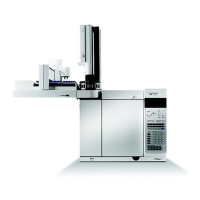
